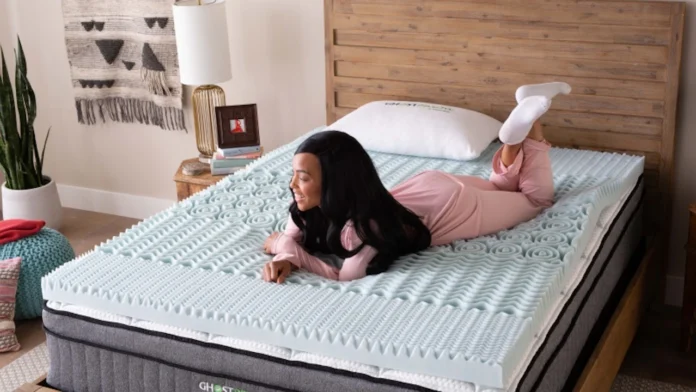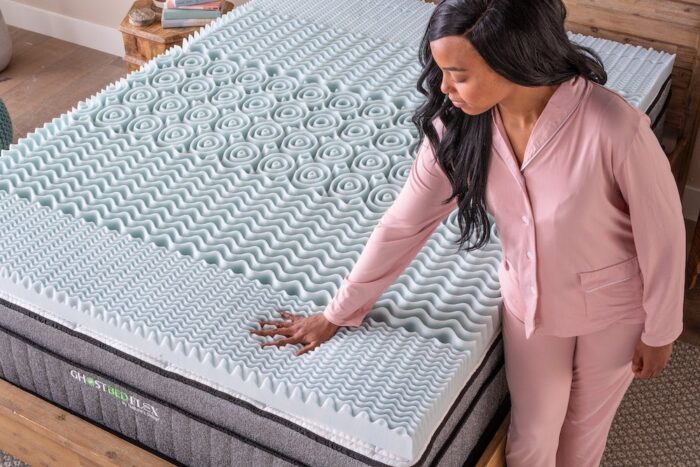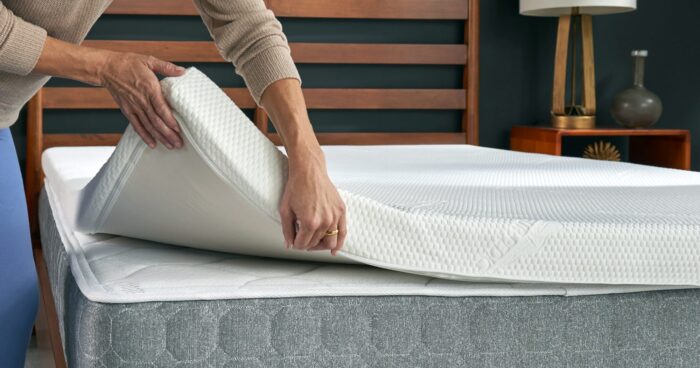
Choosing the right mattress topper is crucial for side sleepers to ensure a good night’s sleep. The thickness of a mattress topper can significantly affect comfort, support, and overall sleep quality. In this 2024 guide, we explore the optimal thickness for mattress toppers tailored to side sleepers, combining the latest research with expert insights.
Optimal Thickness for Side Sleepers

Side sleepers requires a mattress topper that provides adequate cushioning for the shoulders and hips, which bear the most pressure in this sleeping position. The ideal thickness ranges between 2 to 4 inches, but the choice depends on several factors, including personal preference, body weight, and the condition of the existing mattress.
Support and comfort go hand in hand. A 2-inch topper may suffice for lighter individuals or those with a relatively new and supportive mattress. This thickness can offer a slight cushioning effect without compromising the underlying support of the mattress. However, it might not provide enough pressure relief for the hips and shoulders for some, leading to potential discomfort or pain.
On the other hand, a 3 to 4-inch topper is more suitable for those needing extra cushioning or for heavier individuals. This thickness can better distribute body weight, alleviating pressure points and aligning the spine properly. It’s also ideal for older mattresses that have started to lose their support, giving them a new lease on life.
The material also plays a crucial role in determining the optimal thickness. Memory foam toppers, for example, offer excellent contouring and pressure relief, making them a popular choice among people who sleep on the side. A 3-inch memory foam topper can provide a good balance of comfort and support, molding to the body’s shape while maintaining enough firmness to prevent sinking too deeply.
Latex toppers, known for their resilience and support, might not require as much thickness to achieve the same level of comfort and pressure relief. A 2 to 3-inch latex topper could be sufficient for most of them, offering a firmer feel while still contouring the body’s curves.
Factors Influencing Topper Thickness

Selecting the perfect thickness isn’t a one-size-fits-all decision. It involves considering various factors that can influence what’s best for an individual’s needs. Understanding these factors can help them make an informed choice, ensuring they get the most out of their topper.
Personal Comfort Preferences
Personal comfort preferences play a significant role in choosing topper thickness. Some people prefer a softer, more cushioned feel that a thicker capper can provide, while others might opt for a firmer, more supportive surface. Experimenting with different thicknesses and materials can help determine what feels best for individual comfort and sleep quality.
Body Weight Considerations
Body weight is another crucial factor to consider. Heavier individuals may find that thicker clinchers provide better support and prevent them from “bottoming out.” A 4-inch topper, for example, can offer the necessary depth to cushion the body adequately without compromising support. Conversely, lighter individuals might find adequate comfort and support in a thinner topper, preventing unnecessary elevation that could misalign the spine.
Existing Mattress Condition
The condition of the existing mattress is also a key consideration. A newer mattress with ample support might only require a thinner topper to add a layer of comfort. However, an older or sagging mattress might benefit from a thicker capper to compensate for the lack of support, reviving its comfort level and extending its lifespan.
Impact on Sleep Quality

A well-chosen topper can transform your sleep experience, especially for side sleepers. The right thickness can significantly enhance comfort by providing a plush layer that cushions the body, reducing pressure on the hips and shoulders, common pressure points for them. This can lead to a reduction in tossing and turning, promoting deeper, more restorative sleep.
Moreover, the additional support from a properly thick clincher can help maintain spinal alignment, crucial for them. This can prevent the common issue of lower back pain and ensure a more comfortable and rejuvenating sleep experience. Therefore, investing in a bed clincher with the appropriate thickness can be a game-changer for side sleepers.
Preventing Overheating
While adding a mattress capper can increase comfort, it’s essential to consider the potential for overheating, a common concern among people. Thicker toppers, especially those made from memory foam, can trap heat more than thinner ones. However, many modern clinchers come with cooling technologies, such as gel infusions or breathable covers, to mitigate this issue.
Choosing the one with cooling features can help maintain a comfortable sleeping temperature throughout the night, enhancing sleep quality. This is particularly important for them, as the additional cushioning around the shoulders and hips can increase the risk of overheating. Therefore, when considering thickness, it’s also crucial to look for one designed with temperature regulation in mind.
Cost Considerations

The thickness can significantly impact its price. Generally, thicker toppers made from high-quality materials like memory foam or latex come with a higher price tag. However, investing in a thicker, more supportive capper can be a wise decision for improving sleep quality.
A high-quality topper can offer enhanced comfort and support, leading to better sleep and potentially reducing the need for costly chiropractic or physical therapy sessions due to sleep-related discomfort. Therefore, while a thicker clincher may require a larger upfront investment, the long-term benefits to sleep quality and overall health can make it a cost-effective choice.
Balancing Cost with Benefits
It’s important to balance the cost with the benefits it provides. While a thicker topper may offer more support and durability, it’s essential to consider whether the additional cost aligns with your specific needs and budget. There are many high-quality options available at various price points, so people can find a clincher that meets their comfort requirements without breaking the bank.
Conclusion
In conclusion, the ideal mattress topper thickness for side sleepers in 2024 hinges on a combination of factors, including body weight, personal comfort preferences, and the state of the existing mattress. A thickness of 2 to 4 inches is generally recommended, with the choice of material also influencing the final decision. Side sleepers should consider these factors carefully to select a topper that offers the perfect balance of comfort and support, ensuring restful and rejuvenating sleep.








